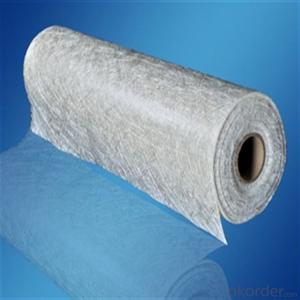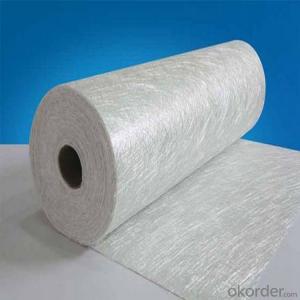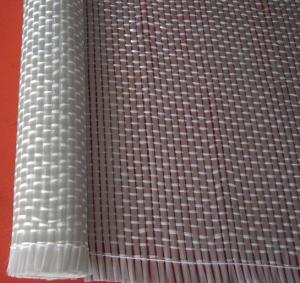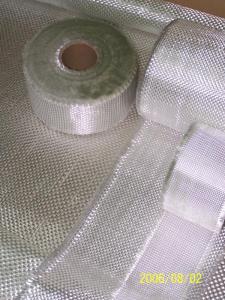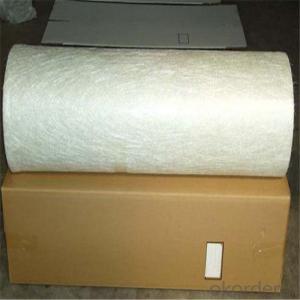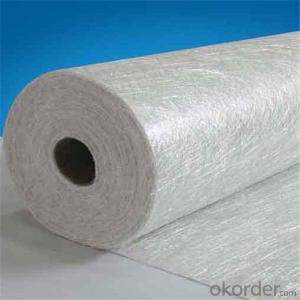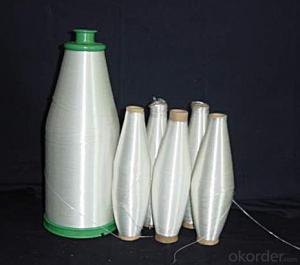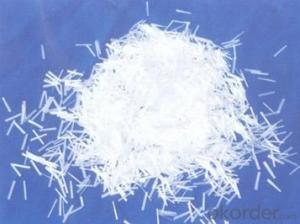Chopped Strand Fiberglass Mat (CSM) Technique and E-Glass Fiberglass Type chopped strand mat
- Loading Port:
- China main port
- Payment Terms:
- TT OR LC
- Min Order Qty:
- 1 kg
- Supply Capability:
- 10000 kg/month
OKorder Service Pledge
OKorder Financial Service
You Might Also Like
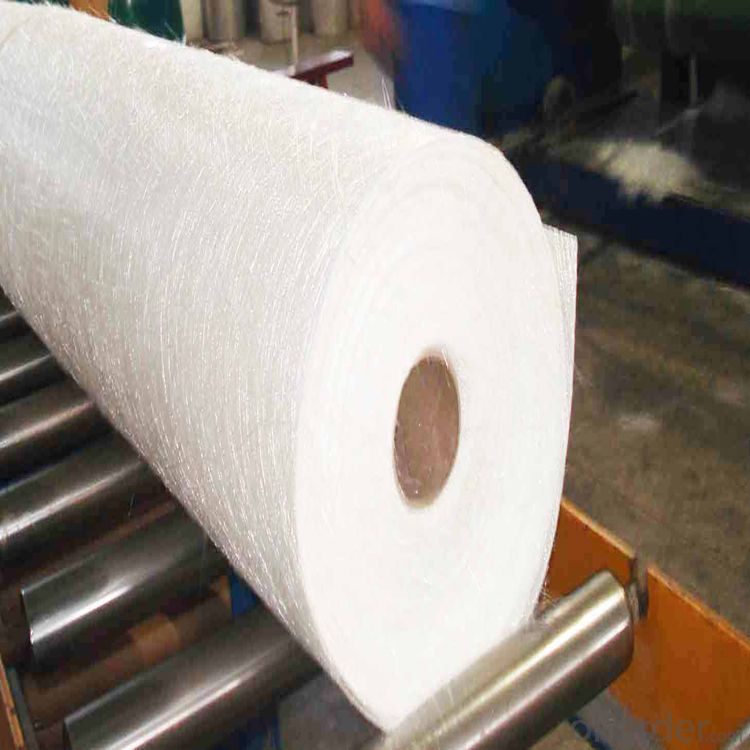
Product Description:
Fiberglass Chopped Strand Mat is fine strand reinforcement material made from E-glass cut fibers laid in a random pattern and bonded with powder or emulsion binder.
It is easy to handle and has excellent moulding performance.
Also, it has rapid resin penetration together with a fast strand wet out time.
The mat also brings a highly translucent finished laminates.
Also,the fine strand input makes the fiber prominence at the finished laminates surface extremely low.
Features
1.Excellent weight uniformity
2.Fast wet out
3.Easy air release
4.Excellent transparency of finished products
5.Excellent laminate
6.Low resin consumption
Application
1.Translucent roof panel
2.chemical storage tanks
3.FRP pipes
4.Boat hulls
5.Decks
6.Truck body panel
7.Cooling towers
8.Corrosion resistand
Specifications:
Item | Over Density | Moisture Content | Chop Density | Polyester Yarn | Width |
(g/m2) | (%) | (g/m2) | (g/m2) | (mm) | |
EMK300 | 309.5 | ≤0.15 | 300 | 9.5 | 50-3300 |
EMK380 | 399 | 380 | 19 | ||
EMK450 | 459.5 | 450 | 9.5 | ||
EMK450 | 469 | 450 | 19 | ||
EMC0020 | 620.9 | 601.9 | 19 | ||
EMC0030 | 909.5 | 900 | 9.5 |
Special products are available according to customer’s requirement.
Product Packaging:
Each Surface Tissue is wound onto a paper tube which has an inside diameter of 76mm and the mat roll has a diameter of 330mm. The mat roll is wrapped up with plastic film,and then packed in a cardboard box or wrapped up with kraft paper. The rolls can be vertically or horizontally placed. For transportation, the rolls can be loaded into a cantainer directly or on pallets.
Quantity
20'GP Container:About 10000kgs
40'HP Container:Aboout 23100kgs
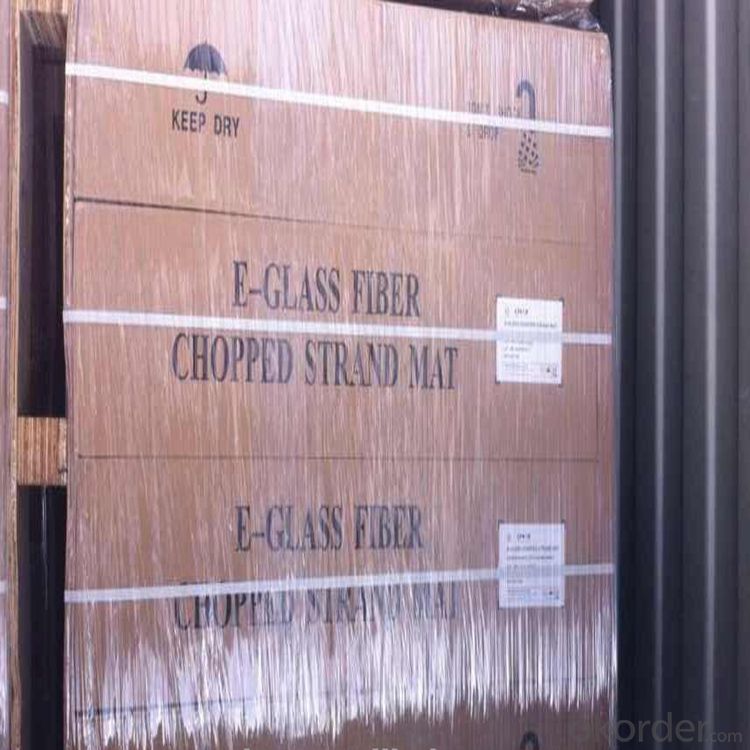
Product Storage:
Unless otherwise specified, Chopped Strand Mat should be stored in a dry, cool and rain-proof area. It is recommended that the room temperature and humidity should be always maintained at 15℃~35℃ and 50%~75% respectively.
Company Information
CNBM (China National Building Material) Group is the largest comprehensive building materials group in China that in integrate scientific research, manufacturing and logistics into one entity. The largest building materials and equipment specialists in China. Upon State Council approval, today CNBM owned more than 300 subordinate manufacturing factories and servicing companies. There are 6 fully owned public listed companies and 11 partially owned with substantial shares public listed companies. In many of these fields, CNBM is playing the leading role in the building industry in the country.

Our Service:
1.Any inquiry will be replied within 24 hours.
2.Professional manufacturer.
1) Print logo in the products;
2) The size and specification can be produce and design according to your demand.
3.High quality,fashion designs,reasonable and competitive price,fast lead time.
4.After-sale service
1) All products will have been strictly quality check in house before packing.
2) All products will be well packed before shipping.
3) All our products have 10 years rot resistance.
5.Faster delivery:sample order in stock,and 15-20 days for bulk production.
6.Payment:you can pay for the order via:T/T,Western Union,MoneyGram,L/C etc.
FAQ:
which kind of glass fiber sample and materials can you provide?
We can provide the glass fiber and glass fiber down stream products samples of E glass, C glass, ECR glass, High alkali glass. The products includes single end roving, assembled roving for different applications( Piping, SMC, panel, winding mill plate) , chop strand for BMC, engineering plastic (PA, PPA, PPT, POM, etc), chop strand mat (from 100gsm-900gsm) for automobile and water tank, etc, woven roving (270gsm-800gsm), surface tissue (25-50gsm), multi-axial fabric of different unit weight.
- Q:Can fiberglass chopped strand be used in acoustic insulation applications?
- Certainly! Acoustic insulation applications can indeed utilize fiberglass chopped strand. Renowned for its superb sound absorption qualities, fiberglass proves itself as the perfect substance for diminishing noise and enhancing acoustics across diverse contexts. When in the form of chopped strands, fiberglass effortlessly combines with other substances, like binders or resins, to fabricate insulation products that efficiently soak up and muffle sound waves. These products find frequent employment in structures, automobile applications, and other settings that prioritize noise reduction. All in all, fiberglass chopped strand emerges as a versatile and highly efficient material for acoustic insulation purposes.
- Q:What are the acoustic properties of fiberglass chopped strand?
- Fiberglass chopped strand has several acoustic properties that make it a popular material in various applications. Firstly, it has excellent sound absorption capabilities due to its fibrous structure. The random orientation of the chopped strands creates spaces and voids that effectively trap and dissipate sound energy, reducing echo and reverberation in enclosed spaces. Additionally, fiberglass chopped strand exhibits low density, making it a lightweight material with good sound insulation properties. It can effectively block and reduce the transmission of sound waves, making it suitable for applications where noise control is important, such as in building construction or automotive interiors. Moreover, fiberglass chopped strand is known for its high tensile strength and durability, which contributes to its acoustic performance. Its strong and resilient nature allows it to maintain its sound-absorbing and insulating properties over time, even in demanding environments. Another advantage of fiberglass chopped strand is its versatility in terms of customization. It can be manufactured with varying thicknesses and densities to meet specific acoustic requirements. This flexibility allows it to be tailored for different applications, such as in soundproofing panels, acoustic ceiling tiles, or speaker enclosures. Lastly, fiberglass chopped strand is non-combustible and resistant to moisture, mold, and mildew. These properties make it suitable for use in areas where fire safety and moisture resistance are critical, such as in theaters, recording studios, or industrial settings. Overall, the acoustic properties of fiberglass chopped strand, including its sound absorption, insulation, strength, customization options, and resistance to fire and moisture, make it a favored material for a wide range of applications where sound control and quality are important.
- Q:What is the tensile strength of fiberglass chopped strand?
- The tensile strength of fiberglass chopped strand can vary depending on the specific composition and manufacturing process, but it typically ranges from 200 to 600 megapascals (MPa).
- Q:What is short cut fiber? What's the nature of it?
- Technical standard:The content of R2O is less than or equal to 0.80% types: even my agent: silane applicable resin: PA, PP, PBT, ABS, BMC fiber diameter: 9 - 13 m moisture content: less than 0.1%
- Q:How does the electrical conductivity of the chopped strand affect its performance?
- The electrical conductivity of the chopped strand can greatly affect its performance in various applications. In general, electrical conductivity refers to the ability of a material to conduct electric current. When it comes to chopped strand, which is typically made of glass fibers, the electrical conductivity can vary depending on factors such as the composition of the glass and any coatings or treatments applied to the strands. One important application where electrical conductivity plays a significant role is in composite materials. Chopped strand is often used as a reinforcement in composite materials to enhance their mechanical properties. However, if the chopped strand has high electrical conductivity, it can result in issues related to electrical grounding or interference. This can be particularly problematic in applications where electrical insulation is required, such as in electronic enclosures or aerospace components. On the other hand, certain applications may actually benefit from a higher electrical conductivity of the chopped strand. For example, in electromagnetic shielding applications, where the purpose is to block or redirect electromagnetic radiation, having a conductive chopped strand can improve the effectiveness of the shielding. The conductive properties of the chopped strand can help to dissipate or redirect the electrical energy, reducing the impact on the surrounding environment. Additionally, the electrical conductivity of the chopped strand can also impact its resistance to electrical arcing or sparking. In high-voltage applications, where the risk of electrical discharge is a concern, using chopped strand with a lower electrical conductivity can help reduce the chances of arcing and potential damage to the material or surrounding components. In summary, the electrical conductivity of the chopped strand can have a significant impact on its performance in various applications. It is important to carefully consider the specific requirements of the application and choose a chopped strand with the appropriate electrical conductivity to ensure optimal performance and avoid any potential issues related to electrical grounding, interference, or electrical discharge.
- Q:What are the environmental impacts of using fiberglass chopped strand?
- The use of fiberglass chopped strand can have both positive and negative environmental impacts. On the positive side, fiberglass is a highly durable material that can be used in a variety of applications, such as construction and manufacturing. Its strength-to-weight ratio makes it an efficient alternative to other materials, reducing the overall amount of material required and potentially lowering energy consumption during production and transportation. However, the production and disposal of fiberglass chopped strand also have several negative environmental impacts. Firstly, the manufacturing process of fiberglass involves the extraction and processing of raw materials, such as silica sand, limestone, and soda ash. These processes can have significant energy requirements and can contribute to air and water pollution, as well as habitat destruction in the areas where these materials are sourced. Additionally, the production of fiberglass involves the use of chemicals, such as resins and binders, which can be hazardous to human health and the environment if not handled properly. The release of these chemicals during manufacturing or disposal can contaminate air, water, and soil, impacting ecosystems and potentially posing health risks to both humans and wildlife. Furthermore, fiberglass is not biodegradable, meaning that once it reaches the end of its useful life, it can contribute to landfill waste or require energy-intensive recycling processes. Improper disposal of fiberglass can lead to environmental pollution and long-term accumulation of non-biodegradable waste. To mitigate these environmental impacts, it is crucial to incorporate sustainable practices throughout the lifecycle of fiberglass chopped strand. This can include using recycled or eco-friendly materials in production, implementing proper waste management and recycling programs, and adopting energy-efficient manufacturing processes. Additionally, it is important to properly handle and dispose of fiberglass waste to prevent its release into the environment. Overall, while fiberglass chopped strand offers certain benefits, it is essential to consider and address its environmental impacts to ensure a more sustainable and responsible use of this material.
- Q:Is fiberglass chopped strand easy to handle and process?
- Fiberglass chopped strand is generally acknowledged as being easy to handle and process. It consists of small, short fibers that are cut to a specified length, typically around 1-3 inches. These fibers are usually mixed with a binder or resin and used in various applications, including reinforced plastics, composites, and insulation. The versatility and ease of use are among the main advantages of fiberglass chopped strand. The short length of the fibers makes them simpler to handle compared to longer continuous fibers. They can be easily mixed with resins or binders and then molded or formed into desired shapes. The chopped strands can also be easily dispersed into a matrix material, ensuring even distribution of the reinforcement throughout the product. Moreover, fiberglass chopped strand offers excellent wet-out properties, which means it can easily absorb and bond with resins or other matrix materials. This guarantees proper adhesion and strength in the final product. In addition to its ease of handling and processing, fiberglass chopped strand has several other benefits. It is lightweight, strong, and corrosion-resistant, making it an ideal choice for various applications. It also provides effective thermal and electrical insulation properties. All in all, fiberglass chopped strand is a convenient and efficient material to work with. Its ease of handling and processing, combined with its desirable properties, have made it a popular choice in industries such as automotive, construction, and aerospace.
- Q:What doed the glass fiber used for?
- Among them, but the same plastic toughness will decrease, but after entering in 90s, glass fiber plain cloth, with the global glass fiber modified plastics: woven fabric called knitted mat or woven mat, wet mechanical strength shall meet the requirements of glass fiber joints, in line with the State Bureau of building materials in the requirements of the market development strategy. It also can prevent thecrack of the paint.
- Q:What are the adhesion properties of fiberglass chopped strand?
- The adhesion properties of fiberglass chopped strand can vary depending on several factors. Firstly, the type of resin or binder used to bind the strands together plays a significant role in determining the adhesion properties. Fiberglass chopped strand is often used in combination with various resins such as polyester, epoxy, or vinyl ester, and the adhesion between the strands and the resin is crucial for the overall strength and performance of the composite. Additionally, the surface treatment of the fiberglass chopped strand can also affect its adhesion properties. Surface treatments such as silane coupling agents or sizing agents are commonly applied to improve the bonding between the fiberglass and the resin. These treatments create chemical bonds between the strands and the resin, enhancing the adhesion strength. Furthermore, the length and diameter of the chopped strands can also impact the adhesion properties. Longer strands generally provide better mechanical interlocking with the resin, resulting in improved adhesion. Similarly, larger diameter strands tend to have more surface area for bonding, leading to increased adhesion strength. In summary, the adhesion properties of fiberglass chopped strand are influenced by the type of resin or binder used, the surface treatment applied, and the length and diameter of the strands. Proper selection and optimization of these factors can result in strong and durable adhesion between the fiberglass chopped strand and the resin, ensuring the desired performance of the composite material.
- Q:How to produce automotive front and rear fender-guard.
- 3) hand paste resin with low molecular weight; 2) glass fiber content can not be too high, carbon fiber, woven roving (cloth) etc.. Although the thick aramid fabric is difficult to be soaked with resin manually. (2) The raw material is unsaturated polyester resin; 2) It can be formed at room temperature. Operate the layer repeatly for several times. (3) the advantage 1) It is suitable for the production of a small amount of solvent. The mechanics and thermal properties are limited because of the high techinicals.
1. Manufacturer Overview |
|
|---|---|
| Location | |
| Year Established | |
| Annual Output Value | |
| Main Markets | |
| Company Certifications | |
2. Manufacturer Certificates |
|
|---|---|
| a) Certification Name | |
| Range | |
| Reference | |
| Validity Period | |
3. Manufacturer Capability |
|
|---|---|
| a)Trade Capacity | |
| Nearest Port | |
| Export Percentage | |
| No.of Employees in Trade Department | |
| Language Spoken: | |
| b)Factory Information | |
| Factory Size: | |
| No. of Production Lines | |
| Contract Manufacturing | |
| Product Price Range | |
Send your message to us
Chopped Strand Fiberglass Mat (CSM) Technique and E-Glass Fiberglass Type chopped strand mat
- Loading Port:
- China main port
- Payment Terms:
- TT OR LC
- Min Order Qty:
- 1 kg
- Supply Capability:
- 10000 kg/month
OKorder Service Pledge
OKorder Financial Service
Similar products
New products
Hot products
Hot Searches
Related keywords

